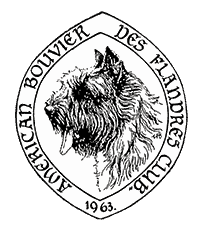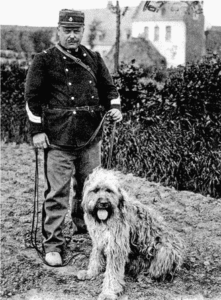 Bouvier des Flandres: A Farmer’s Dog | Let’s take a trip back in time. Let’s go back well over a hundred years to the country of Belgium, prior to the industrial revolution. The land is lush and level in the lowlands, but the climate, while temperate, is frequently damp. Up in the mountains to the North, the climate gets much colder and the land is rocky and poor. It is here that you own a small farm; no more than twenty acres. It is here that you scrabble to house and feed your growing family. You own very little; a few head of dairy cattle. The days are long and you need help to complete all the chores. There is no money to pay for a helper, and a horse is expensive to buy and feed. For the farmers of Belgium, a dog was the answer. A Bouvier, the Belgian word for a drover’s dog. Not a breed yet; merely a farmer’s dog.
Bouvier des Flandres: A Farmer’s Dog | Let’s take a trip back in time. Let’s go back well over a hundred years to the country of Belgium, prior to the industrial revolution. The land is lush and level in the lowlands, but the climate, while temperate, is frequently damp. Up in the mountains to the North, the climate gets much colder and the land is rocky and poor. It is here that you own a small farm; no more than twenty acres. It is here that you scrabble to house and feed your growing family. You own very little; a few head of dairy cattle. The days are long and you need help to complete all the chores. There is no money to pay for a helper, and a horse is expensive to buy and feed. For the farmers of Belgium, a dog was the answer. A Bouvier, the Belgian word for a drover’s dog. Not a breed yet; merely a farmer’s dog.
But what kind of dog to help with all the work around the farm? You needed a dog capable of moving the cows into the field in the morning and bringing them back to the barn at night. Or driving them to market down tight country lanes. Once you had milked, you needed a dog to pull a cart—laden with the heavy milk jugs—to market. (And, perhaps, to pull you home if you had spent some of your money at the local pub.) You wanted a dog to help churn the butter and work the gristmill stone. At night, the dog that you required would remain outdoors to guard the farmyard from intruders… not only humans but the large gray wolves of the European continent. And he needed to be an easy keeper, living off table scraps. You did not need a specialist, but a combination of a herding dog and a cart dog… a dog with no exaggerations. A dog that was willing and physically able to do what you asked of him.
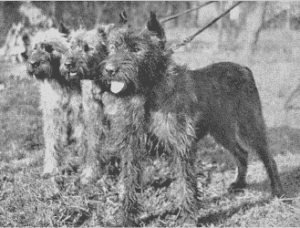 First, the dog needed to be powerfully built with an imposing presence. (Cows will challenge a dog, and they are capable of a kick to the side, backed by a thousand pounds.) a dog with well-sprung ribs and strong bone to absorb the kick should he find himself in the wrong place at the wrong time! A compact, short-coupled dog capable of quick turns and short bursts of speed to head off the stock if they decided to wander from the path. A dog with an easy, balanced, ground-covering gait, so he would not tire.
First, the dog needed to be powerfully built with an imposing presence. (Cows will challenge a dog, and they are capable of a kick to the side, backed by a thousand pounds.) a dog with well-sprung ribs and strong bone to absorb the kick should he find himself in the wrong place at the wrong time! A compact, short-coupled dog capable of quick turns and short bursts of speed to head off the stock if they decided to wander from the path. A dog with an easy, balanced, ground-covering gait, so he would not tire.
A dog with a thick double coat because he was asked to work in all weather conditions; a coat that kept him warm and shed water. A dog well-muscled, especially in the rear quarters, and broad across the chest and back to push into the harness to move a heavy cart to market—often miles away. But a dog not too large, for he needed to be agile as well, to dodge the cow kick, to jump the fence, and to chase off an intruder. He needed to be spirited, bold, and fearless. He was loyal and resolute; a sensible dog that took his rest when he could, for he worked all day and all night. A high-strung dog would not do. He needed to be even-tempered, for he controlled a good part of the world he lived in.
This is the dog that fanciers were thinking of when they gathered in 1912 to come up with a standard of perfection that would forever change the Bouvier of Belgium into the Bouvier des Flandres. When describing the body of the Bouvier, they used the term “well-muscled” seven times, and “wide” and “broad” five times. This is the blue-collar working dog they admired and wished to advance. While a Bouvier in proper coat and trim can be quite striking, he is never an elegant dog. Underneath the trappings of the dog show, the Bouvier must still possess the qualities that made him indispensable to a poor Belgian farmer. A Bouvier des Flandres must always remind you, in body and mind, that he is still a farmer’s dog; the Dog of Flanders.
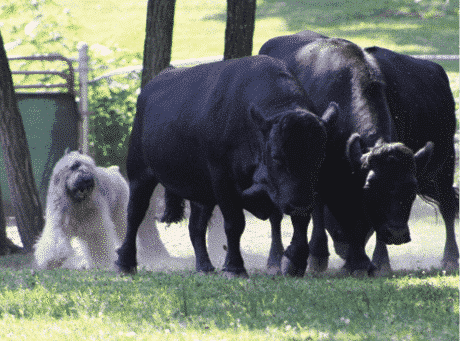
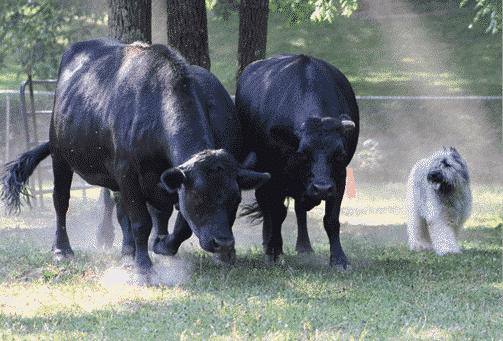
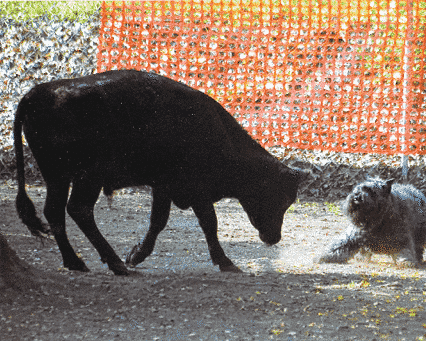
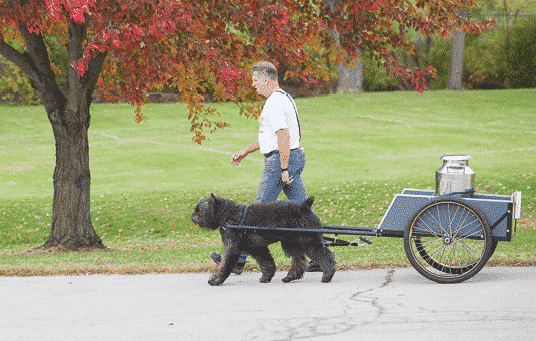
A Final Thought
FROM THE ABDFC JUDGES’ EDUCATION COMMITTEE:
During several recent televised dog shows, the announcers have stated that a Bouvier moves cattle with his head. I believe they are conflating the herding term “to head” stock (which simply means moving to the front of the animals to turn them) and using Bouvier’s broad, flat skull as a battering ram to move a cow. A nanosecond of thought should tell you that this is never going to happen! A Bouvier moves cattle by working off its flank, driving them forward using the full power of his presence and an occasional, well-timed heel nip.



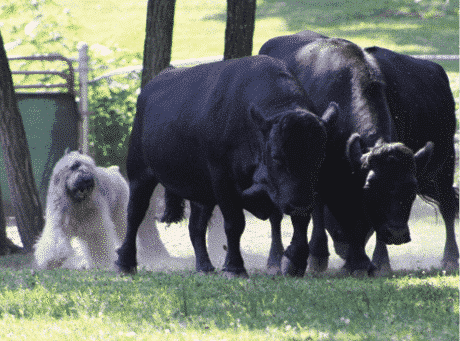

 First, the dog needed to be powerfully built with an imposing presence. (Cows will challenge a dog, and they are capable of a kick to the side, backed by a thousand pounds.) a dog with well-sprung ribs and strong bone to absorb the kick should he find himself in the wrong place at the wrong time! A compact, short-coupled dog capable of quick turns and short bursts of speed to head off the stock if they decided to wander from the path. A dog with an easy, balanced, ground-covering gait, so he would not tire.
First, the dog needed to be powerfully built with an imposing presence. (Cows will challenge a dog, and they are capable of a kick to the side, backed by a thousand pounds.) a dog with well-sprung ribs and strong bone to absorb the kick should he find himself in the wrong place at the wrong time! A compact, short-coupled dog capable of quick turns and short bursts of speed to head off the stock if they decided to wander from the path. A dog with an easy, balanced, ground-covering gait, so he would not tire.



